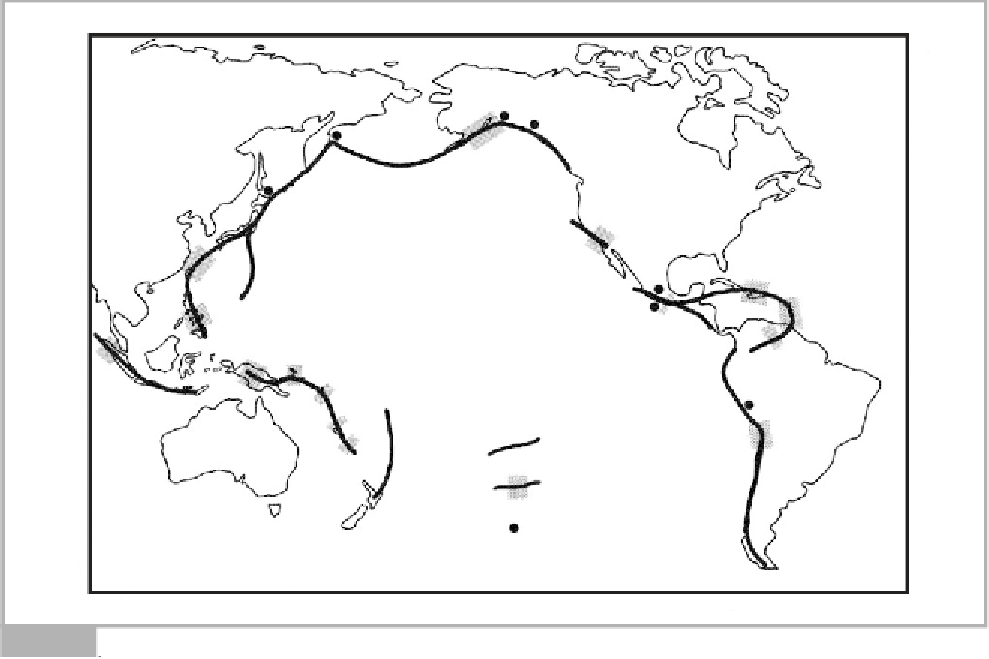Geoscience Reference
In-Depth Information
intervals of between 55 and 275 years. The average
return period was 160 years, with the last major earth-
quake occurring in 1857. Based upon this periodicity,
the next major earthquake above 8 on the Richter scale
is imminent in the Los Angeles area within the next
20-30 years. This forecast is not illogical given the fact
that most earthquakes occur along plate boundaries,
which are slowly moving past each other at rates averag-
ing 10 cm yr
-1
. If the frictional drag between two plates
moving relative to each other is not released continually,
then forces will build up over time, culminating in a
single major jump of the plates along a fault line.
Because the plates are moving at a continual rate, the
historic record of fault displacements should provide the
return period or frequency of earthquakes in a region.
For instance, if the average displacement along a fault is
5 m for each earthquake, then the fault should be active
every 50 years, given the above rate of plate movement,
10 cm yr
-1
. Around the Pacific Ocean, the return period
for earthquakes is between 75 and 300 years. More sig-
nificantly, once a plate has moved along a fault line in an
area, the probability of a similar sized event occurring in
the next few decades after the earthquake is perceived
as small. In the area of the 1960 Chilean earthquake, the
return period of large earthquakes for the past 300 years
averages 80 years. The next major earthquake here is not
expected until 2040 ± 20 years.
Around the Pacific region, plates are moving so
consistently that anomalous regions that are not
moving can be easily detected. For instance, in the
Alaskan region, plate movements have generated
continual earthquake activity over the past 150 years as
stresses build up to crucial limits and are periodically
released at various points along the plate margin.
However, at some locations, the stresses may not be
released easily; these points appear in the historical
record as abnormally aseismic, while adjacent regions
are seismically active. These locations, called
seismic
gaps
, are prime sites for future earthquake activity,
especially if earthquakes have not occurred in the
region in the previous 30 years. The Alaskan earth-
quake of 1964 filled in one of these gaps as did the
Mexican earthquake of 19 September 1985. Major
seismic gaps as of 2003 are shown in Figure 9.12. The
Los Angeles area of California is located at a seismic
gap, as is much of the Caribbean Sea.
Away from plate boundaries, the overall rate of
movement along faults is an order of magnitude slower
Earthquake zone
Seismic gap
Predicted earthquake
Location of major seismic gaps in the Pacific 'ring of fire' (Coates, 1985).
Fig. 9.12





